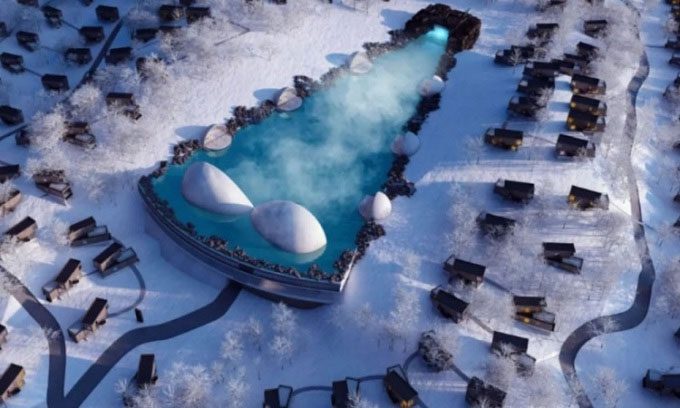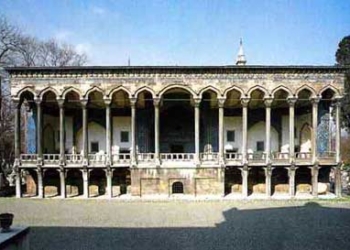According to plans, the largest geothermal lagoon in the world will be located in Charlevoix, a 45-minute drive from Quebec, maintaining water temperatures at 39 degrees Celsius year-round.
The open-air lagoon will feature a patented heating system that keeps the water warm at 39 degrees Celsius even during winter when temperatures drop below 0 degrees Celsius, Interesting Engineering reported on September 22. The project, named geoLagoon, is inspired by a lagoon in Iceland. The owner of the project, Louis Massicotte, CEO of geoLagoon, hopes to build four such lagoons in Canada alone.

Design sketch of the geoLagoon lagoon. (Photo: geoLagoon).
The lagoon in Charlevoix will cover an area of 12,000m2. Surrounding the lagoon, hundreds of wooden houses will be constructed to create a village that blends with the natural landscape. These houses will be equipped with solar panels to harness solar energy for running heat pumps. Beneath the lagoon’s bottom lies a massive thermal reservoir supported by an energy ecosystem that includes geothermal energy, biomass, solar panels, and heating systems.
The construction process of the project is divided into three phases. In the first phase, 150 solar-powered wooden houses will be built. Following this, workers will begin constructing the geothermal lagoon. Finally, the remaining 300 wooden houses will be developed. Inspired by the 8,700m2 Blue Lagoon in Iceland, once completed, the geoLagoon will be significantly larger.
After Charlevoix, geoLagoon plans to build three more lagoons in Laurentides, Lanaudière, and Eastern Townships. Construction at the first site is expected to begin in March 2023 and last for 18 months.
A feasibility study by a Canadian sustainable energy company confirms that the project can meet energy demands by utilizing renewable sources. Massicotte also aims to implement optimization technologies such as waste heat recovery systems.
“It is likely that the geoLagoon project will generate more electricity than it consumes, allowing for surplus electricity to be supplied to the surrounding community. The lagoon and the surrounding village could meet their electricity needs without drawing from the power grid,” Massicotte stated.





















































